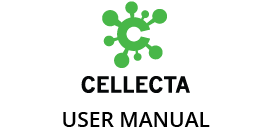The scAIR assay protocol requires as input a suspension of viable single or a pool of T/B cells sorted or deposited into 96-well sorting plates with 5µl of Hybridization Master Mix aliquoted by the customer from the provided Master Plate. Specific protocols for isolation and Flow sorting of T/B cells are dependent on specific research needs and are outside of the scope of the current protocol. As a rule, T/B cells could be isolated from PBMC or dissociated tissue samples using standard protocols developed and validated for scRNA-seq technologies. As described in the protocol below, T or B cells can be deposited in the plate wells as single cells or a pool of T or B cells (approximately 100 cells/well for bulk chain pairing assay). To generate high-quality scAIR data, it is important to:
- Use T/B cells with at least 70% viability. Dying/non-viable cells release “contaminating” RNA in sorting media, which generates background in scAIR data. Furthermore, dead cells usually generate cell aggregates. Consider dead cell removal (e.g., by magnetic microbeads) for low-viability cell samples.
- Reduce cell stress at straining, filtering, thawing, centrifugation, washing, and resuspension steps (pipetting).
- Use optimal media for purification and sorting T/B cells, e.g., 1X PBS with 1% BSA for cell washing and resuspension.
- For cell sorting to reduce cell shear stress, use a 70-100 µm nozzle or consider using a low-pressure cell sorter. Add live/dead cell marker before sorting.
- Sort T/B cells directly in hybridization buffer to reduce contact of cells with the well/tube walls.
- For deposition of pool T or B cells, wash the cells in 1X PBS with 0.1% BSA, adjust the concentration of cells to 100 cells/ µl and measure by a hemocytometer, deposit 1 µl of cells per side wall, and briefly centrifuge the plate to mix the cells with hybridization buffer.
For detailed protocols related to Flow sorting of lymphocyte cells and cell fractions, please refer to: Guidelines for the use of flow cytometry and cell sorting in immunological studies
For a detailed overview of experimental strategies for designing AIR profiling experiments, please refer to the DriverMap AIR Technology Guide.
Need more help with this?
Contact Us

